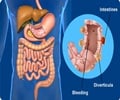The guideline provides recommendations on how to evaluate affected children for medical or psychological complications and the need for genetic testing.

- Obesity in children and teenagers impose an estimated $14.1 billion in additional prescription drug, emergency room and outpatient medical visit costs each year.
- Reducing the burden of childhood obesity is a major concern to lower the risk of other diseases in the long run.
- The Endocrine Society Clinical Practice Guideline was published to help physicians prevent and treat child obesity.
Pediatric obesity is a pervasive international problem. In 2011-2014, 17% of American children and teenagers between the ages of 2 and 19 were affected by obesity, according to the U.S. Centers for Disease Control and Prevention.
Obesity in this age group was associated with an estimated $14.1 billion in additional prescription drug, emergency room and outpatient medical visit costs each year, according to the Society's Endocrine Facts & Figures Report.
Children and teenagers are diagnosed as being overweight when an individual's body-mass index (BMI) is between the 85th and 95th percentile for their age and sex.
Obesity occurs when a child or teen's BMI is greater than or equal to the 95th percentile for their age and sex. A child or teen is diagnosed with extreme obesity when the BMI is greater than or equal to 120 percent of the 95th percentile.
Since the Society last issued a pediatric obesity guideline in 2008, physicians have access to new information on genetic causes of obesity, psychological complications associated with obesity, surgical techniques and medications that are now available for the most severely affected older teenagers. The guideline offers information on incorporating these developments into patient care.
- Children or teens with a BMI greater than or equal to the 85th percentile should be evaluated for related conditions such as metabolic syndrome and diabetes.
- Youth being evaluated for obesity do not need to have their fasting insulin values measured because it has no diagnostic value.
- Children or teens affected by obesity do not need routine laboratory evaluations for endocrine disorders that can cause obesity unless their height or growth rate is less than expected based on age and pubertal stage.
- About 7 percent of children with extreme obesity may have rare chromosomal abnormalities or genetic mutations. The guideline suggests specific genetic testing when there is early onset obesity (before 5 years old), an increased drive to consume food known as extreme hyperphagia, other clinical findings of genetic obesity syndromes, or a family history of extreme obesity.
Reference
- Endocrine Society experts issue clinical practice guideline on pediatric obesity, Journal of Clinical Endocrinology and Metabolism (2017) http://dx.doi.org/10.1210/jc.2016-2573.
Source-Medindia















